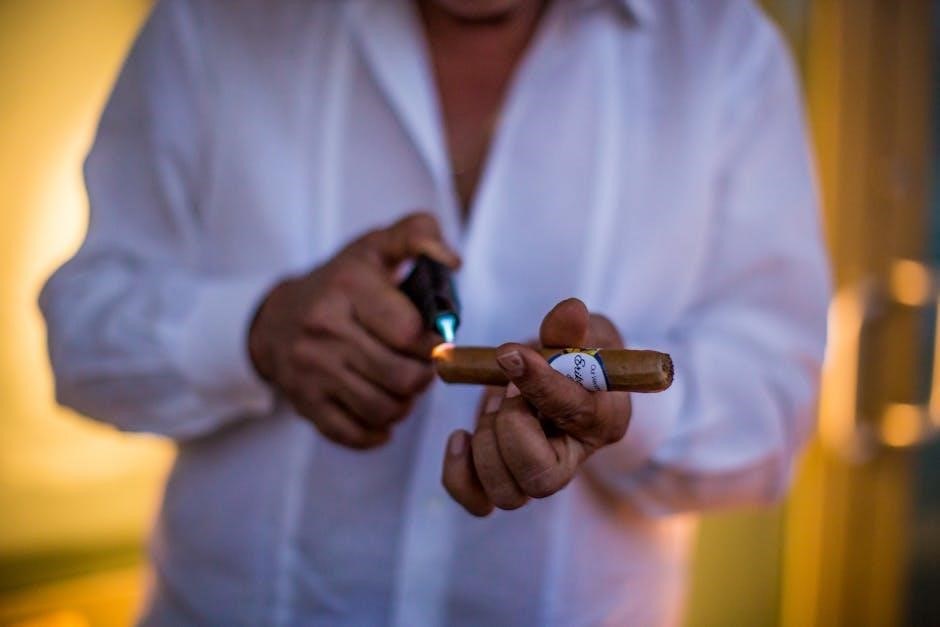Plant Paradox Meal Plan: A Comprehensive Guide
Embark on a transformative journey with a detailed Plant Paradox meal plan‚ often available as a downloadable PDF‚ designed to reset your gut and reduce inflammation.
The Plant Paradox Diet‚ popularized by Dr. Steven Gundry‚ centers around minimizing lectin intake‚ proteins found in many plants‚ believed to trigger inflammatory responses.
Many individuals seek a Plant Paradox meal plan PDF to streamline this dietary shift. This approach isn’t about eliminating plants entirely‚ but rather strategically choosing which ones to consume.
The diet aims to improve gut health‚ reduce weight‚ and alleviate various health issues.
A well-structured meal plan PDF provides a roadmap‚ offering guidance on approved foods and recipes.
It’s a lifestyle change focused on optimizing well-being through informed food choices.
What are Lectins and Why Avoid Them?
Lectins are naturally occurring proteins found in plants‚ acting as a defense mechanism. Dr. Gundry posits that these lectins can interfere with the human digestive process‚ causing inflammation and hindering nutrient absorption. A Plant Paradox meal plan PDF helps navigate this complexity.
While our bodies can handle some lectins‚ the diet suggests minimizing exposure from specific sources like grains‚ legumes‚ and nightshades.
Reducing lectin intake is believed to improve gut health‚ potentially aiding weight loss and reducing autoimmune responses. Understanding lectins is key to successfully implementing the diet.
The Core Principles of the Plant Paradox
The Plant Paradox centers around minimizing lectin consumption‚ focusing on foods that support gut health and reduce inflammation. A Plant Paradox meal plan PDF outlines these principles. The diet prioritizes nutrient-dense foods while eliminating or limiting those high in lectins.
Emphasis is placed on healthy fats‚ specific protein sources‚ and non-starchy vegetables. It’s not about eliminating all plant foods‚ but rather choosing wisely.
The goal is to heal the gut lining‚ improve digestion‚ and optimize overall well-being through strategic dietary choices.

Foods to Embrace on the Plant Paradox Diet
A Plant Paradox meal plan PDF highlights approved foods: lean proteins‚ healthy oils like olive and avocado‚ and abundant non-starchy vegetables for optimal health.
Approved Protein Sources
A comprehensive Plant Paradox meal plan PDF emphasizes prioritizing protein sources low in lectins. This includes a variety of options to ensure a balanced and flavorful diet.
Beef‚ poultry (chicken and turkey)‚ game meats like venison‚ boar‚ ostrich‚ bison‚ elk‚ and even duck and goose are all encouraged. Prosciutto is also permitted. The plan suggests around four ounces per day‚ offering flexibility with these choices.
Interestingly‚ the PDF often details utilizing the entire animal‚ including organ meats‚ for maximum nutritional benefit. It also notes the allowance of egg yolks‚ or a single whole egg‚ as a protein source.
Beef and Poultry
The Plant Paradox meal plan PDF highlights beef and poultry as foundational protein sources‚ being naturally low in problematic lectins. Grass-fed beef is particularly favored due to its superior nutrient profile and reduced lectin content compared to grain-fed options.
Poultry‚ specifically chicken and turkey‚ are also readily approved‚ offering lean protein choices. The PDF often suggests opting for organic or pasture-raised birds whenever possible.
Preparation methods are key; avoiding marinades with lectin-rich ingredients is crucial. Simple seasoning and cooking techniques like roasting or grilling are recommended for optimal adherence to the diet.
Fish and Seafood
The Plant Paradox meal plan PDF champions fish and seafood as excellent protein choices‚ largely free from the lectins that trigger adverse reactions. Wild-caught varieties are prioritized‚ boasting higher omega-3 fatty acid content and minimal exposure to farmed feed containing lectins.
Salmon‚ tuna‚ sardines‚ and mackerel are frequently featured‚ offering substantial health benefits alongside their protein value. Shellfish‚ including shrimp‚ crab‚ and lobster‚ are generally considered safe and encouraged.
The PDF emphasizes simple preparations – baking‚ grilling‚ or steaming – to avoid introducing lectin-containing ingredients through sauces or marinades.
Game Meats
The Plant Paradox meal plan PDF highlights game meats as superior protein sources‚ naturally low in lectins compared to conventionally raised livestock. Venison‚ boar‚ bison‚ elk‚ and even duck are frequently recommended‚ offering a rich nutrient profile and distinct flavors.
These animals typically graze on lectin-free diets‚ resulting in leaner meat with reduced inflammatory potential. The PDF often includes recipes showcasing these meats‚ emphasizing simple seasoning and cooking methods.
Prosciutto is also sometimes included‚ but careful sourcing is advised to ensure minimal processing and lectin contamination.
Healthy Fats and Oils
The Plant Paradox meal plan PDF emphasizes incorporating healthy fats as a cornerstone of the diet‚ crucial for satiety and overall well-being. Olive oil‚ particularly extra virgin‚ is a staple‚ lauded for its anti-inflammatory properties and polyphenol content.
Avocado oil is another favored choice‚ boasting a high smoke point suitable for various cooking methods. Coconut oil‚ specifically unrefined‚ is also permitted‚ offering medium-chain triglycerides for energy.
The PDF often cautions against seed oils and processed vegetable oils‚ deeming them potentially inflammatory.
Olive Oil
The Plant Paradox meal plan PDF consistently highlights extra virgin olive oil as a primary fat source‚ praising its abundance of beneficial polyphenols. These compounds contribute to its potent anti-inflammatory effects‚ aligning with the diet’s core principles.
The PDF recommends using olive oil liberally in salad dressings‚ for drizzling over vegetables‚ and even for low-to-medium heat cooking. It’s crucial to select high-quality‚ cold-pressed varieties to maximize nutritional benefits.
Avoid refined olive oils‚ as processing can diminish their health-promoting properties.
Avocado Oil
Plant Paradox meal plan PDFs frequently endorse avocado oil as another excellent fat choice‚ celebrated for its high smoke point and neutral flavor profile. This makes it ideal for higher-heat cooking methods where olive oil might degrade.
The diet emphasizes avocado oil’s monounsaturated fats‚ which support heart health and overall well-being. PDFs often suggest using it for sautéing‚ roasting‚ and even baking‚ offering a versatile alternative to other oils.
Like olive oil‚ prioritize cold-pressed‚ unrefined avocado oil to retain maximum nutritional value.
Coconut Oil
Many Plant Paradox meal plan PDFs highlight coconut oil as a beneficial fat source‚ particularly due to its medium-chain triglycerides (MCTs). These MCTs are believed to be easily digested and utilized for energy‚ potentially aiding in weight management.
The diet often recommends using virgin coconut oil‚ which retains more of its natural properties. PDFs suggest incorporating it into cooking‚ smoothies‚ or even consuming a tablespoon daily for its potential health benefits.
However‚ moderation is key‚ as coconut oil is high in saturated fat.
Non-Starchy Vegetables

Plant Paradox meal plan PDFs emphasize a generous intake of non-starchy vegetables‚ forming the cornerstone of most meals. These are generally low in lectins and packed with essential nutrients.
PDFs typically provide extensive lists‚ encouraging variety and abundance. Focus is placed on maximizing fiber intake and supporting gut health through these vegetable choices. They are considered safe and beneficial for those following the diet’s principles.
These vegetables are versatile and can be incorporated into numerous recipes‚ making adherence to the plan more sustainable and enjoyable.
Leafy Greens

Plant Paradox meal plan PDFs highlight leafy greens as nutritional powerhouses‚ freely enjoyed on this dietary approach. Spinach‚ kale‚ collard greens‚ and romaine lettuce are frequently recommended‚ forming the base of salads and side dishes.
These greens are exceptionally low in lectins and rich in vitamins‚ minerals‚ and antioxidants. PDFs often suggest incorporating them daily‚ emphasizing their benefits for overall health and gut microbiome support.
Recipes within these plans frequently feature leafy greens‚ demonstrating their versatility and ease of integration into various meals.
Cruciferous Vegetables
Plant Paradox meal plan PDFs champion cruciferous vegetables as excellent choices‚ though with some caveats regarding preparation. Broccoli‚ cauliflower‚ cabbage‚ and Brussels sprouts are generally approved‚ offering substantial nutritional value.
However‚ PDFs often advise thorough cooking – steaming‚ roasting‚ or fermenting – to reduce lectin content. Raw consumption is typically discouraged. These vegetables are rich in glucosinolates‚ compounds linked to cancer prevention.
Meal plans frequently include recipes utilizing these vegetables‚ demonstrating their adaptability and contribution to a lectin-light diet.

Foods to Avoid on the Plant Paradox Diet
Plant Paradox meal plan PDFs meticulously detail foods to avoid‚ primarily those high in lectins like nightshades‚ legumes‚ and certain grains‚ impacting gut health.
Nightshade Vegetables
Plant Paradox meal plan PDFs emphasize the avoidance of nightshade vegetables due to their high lectin content. This family includes commonly consumed foods like tomatoes‚ which are prevalent in many diets‚ and potatoes‚ a staple carbohydrate source. Eggplant also falls into this category‚ often used in Mediterranean and Asian cuisines.
The rationale behind this restriction stems from the belief that lectins in nightshades can contribute to inflammation and gut permeability. Detailed PDF guides often provide lists of specific nightshade varieties to avoid‚ including peppers (bell peppers‚ chili peppers‚ paprika) and goji berries. Understanding these exclusions is crucial for successful adherence to the diet.
Tomatoes
Plant Paradox meal plan PDFs strictly advise against consuming tomatoes in any form. This includes fresh tomatoes‚ canned tomatoes‚ tomato sauce‚ ketchup‚ and even tomato paste. The high lectin concentration within tomatoes is considered a significant contributor to inflammation and potential digestive issues‚ according to the diet’s principles.
Many PDF resources offer alternative options for flavor and nutrients‚ suggesting replacements like roasted red beets for color or utilizing compliant herbs and spices. Strict adherence requires careful label reading‚ as tomato is a common ingredient in processed foods. Successfully navigating the diet means eliminating this versatile fruit entirely.
Potatoes
Plant Paradox meal plan PDFs universally recommend avoiding all types of potatoes – white‚ red‚ yellow‚ and even sweet potatoes – due to their substantial lectin content. These lectins are believed to disrupt gut health and trigger inflammatory responses within the body. The diet emphasizes that potatoes‚ despite being a common starch‚ pose a significant challenge for those aiming to minimize lectin intake.
PDF guides often suggest alternatives like cauliflower or jicama to satisfy starchy cravings. Careful scrutiny of ingredient lists is crucial‚ as potato starch is frequently used as a thickener in processed foods. Complete elimination is key for optimal results.
Eggplant
Plant Paradox meal plan PDFs consistently categorize eggplant as a nightshade vegetable to be strictly avoided. This is due to its high concentration of lectins‚ which are thought to interfere with digestive processes and contribute to inflammation. The diet’s core principle centers around minimizing lectin exposure‚ and eggplant is identified as a significant source.
PDF resources often highlight that even cooking methods don’t fully eliminate the problematic lectins in eggplant. Alternatives like zucchini or yellow squash are recommended to provide similar textures without the lectin load. Vigilance in reading food labels is also advised‚ as eggplant can appear in unexpected products.
Legumes and Grains
Plant Paradox meal plan PDFs universally recommend eliminating most legumes and grains. These food groups are considered high in lectins‚ potentially disrupting gut health and triggering inflammatory responses. Common culprits include beans‚ lentils‚ and all varieties of wheat‚ including spelt and kamut.
Rice‚ even brown rice‚ is typically restricted due to its lectin content. PDF guides emphasize that these foods contain protective compounds lectins use to deter consumption. The diet promotes alternatives like cauliflower rice or konjac noodles. Strict adherence to avoiding these staples is crucial for experiencing the purported benefits of the Plant Paradox protocol.
Beans
Plant Paradox meal plan PDFs consistently categorize beans as a “no-go” food due to their high lectin concentration. All types – kidney‚ black‚ pinto‚ navy‚ and even seemingly healthier options like lentils – are generally excluded. Lectins in beans are considered particularly problematic‚ potentially causing digestive distress and hindering nutrient absorption.
PDF resources explain that soaking and cooking beans may reduce lectin levels‚ but aren’t considered sufficient for strict adherence. The diet encourages substituting beans with lectin-free protein sources like pasture-raised poultry or wild-caught fish. Completely avoiding beans is a cornerstone of the Plant Paradox approach.
Wheat
Plant Paradox meal plan PDFs universally advise eliminating wheat in all its forms. This includes not only traditional wheat bread and pasta‚ but also spelt‚ kamut‚ farro‚ and even wheat-containing processed foods. The high lectin content in wheat is believed to contribute to gut inflammation and autoimmune responses‚ according to the diet’s principles.
PDF guides emphasize that modern wheat varieties are particularly problematic due to selective breeding. Alternatives suggested in these plans include almond flour‚ coconut flour‚ or cauliflower-based substitutes. Strict avoidance of wheat is crucial for experiencing the potential benefits of the Plant Paradox diet.
Rice
Plant Paradox meal plan PDFs generally recommend limiting or avoiding rice‚ particularly white rice‚ due to its lectin content. While not as strictly prohibited as wheat‚ rice is considered a potential gut irritant for sensitive individuals following the diet. Brown rice is sometimes permitted in small quantities by some versions of the plan.


PDF resources often suggest alternatives like cauliflower rice or konjac rice to satisfy carbohydrate cravings without the lectin load. The degree of restriction varies‚ but most guides advise mindful consumption and careful monitoring of individual tolerance levels when incorporating rice.
Nuts and Seeds (Specific Varieties)
Plant Paradox meal plan PDFs highlight that not all nuts and seeds are created equal. Peanuts and cashews are specifically flagged as high in lectins and are generally excluded from the diet. These are considered more like legumes in their lectin profile.
Conversely‚ many PDF guides approve of macadamia nuts‚ pecans‚ and walnuts in moderation. Seeds like chia‚ flax‚ and pumpkin seeds are often included‚ but portion control is key. Resources emphasize peeling seeds where possible to reduce lectin exposure‚ and soaking them before consumption.
Peanuts
Plant Paradox meal plan PDFs consistently categorize peanuts as a food to strictly avoid due to their exceptionally high lectin content. Despite being commonly referred to as nuts‚ peanuts are actually legumes‚ sharing a similar lectin profile with beans and lentils.
These PDF resources explain that peanut lectins can significantly contribute to gut inflammation and digestive issues. Many guides suggest eliminating all forms of peanuts‚ including peanut butter and peanut oil. Alternatives like macadamia nuts or avocado oil are recommended for those following the diet diligently;

Cashews
Plant Paradox meal plan PDFs universally advise against consuming cashews‚ citing their substantial lectin concentration. While often grouped with nuts‚ cashews possess a unique lectin structure that can trigger adverse reactions in sensitive individuals following the diet.
These PDF guides emphasize that cashews can contribute to leaky gut and systemic inflammation. Many resources suggest replacing cashews with safer nut options like pecans or walnuts. Strict adherence to the plan‚ as detailed in these downloadable resources‚ necessitates complete avoidance of cashew-containing products.
Sample Plant Paradox Meal Plan
Explore a typical 7-day Plant Paradox meal plan‚ frequently found in PDF format‚ focusing on lectin-free foods for optimal gut health and well-being.
7-Day Meal Plan Overview
A comprehensive 7-day Plant Paradox meal plan‚ often distributed as a PDF‚ provides a structured approach to lectin avoidance. This plan emphasizes approved protein sources like beef‚ poultry‚ and fish‚ alongside healthy fats such as olive and avocado oil.
Non-starchy vegetables‚ including leafy greens and cruciferous varieties‚ form the foundation of many meals. The plan systematically eliminates nightshades‚ legumes‚ and specific nuts like peanuts and cashews.
Expect a focus on preparing meals in advance and diligently reading food labels to ensure compliance. This overview serves as a starting point for a deeper dive into daily meal suggestions‚ designed to reduce inflammation and support gut health.
Breakfast Ideas
Plant Paradox-approved breakfasts‚ detailed in many downloadable PDF meal plans‚ prioritize protein and healthy fats to kickstart your day. Consider scrambled eggs with avocado‚ utilizing olive oil for cooking. Coconut yogurt with a handful of approved berries (like blueberries) offers a refreshing option.
For a quick start‚ a high-protein‚ low-carb bar – carefully vetted for lectin-free ingredients – can be convenient. Some plans suggest incorporating bone broth for gut-healing benefits. Avoid traditional breakfast staples like oatmeal or wheat toast;
Focus on fueling your body with nutrient-dense foods that support energy levels without triggering inflammatory responses.
Lunch Ideas
Plant Paradox lunch options‚ frequently outlined in comprehensive PDF meal plans‚ emphasize lean proteins and non-starchy vegetables. Arugula salads with mushrooms and a protein source like chicken breast are excellent choices. Roasted cauliflower with sage provides a flavorful‚ lectin-free side dish.
Consider a generous portion of fish or seafood paired with a leafy green salad dressed with olive oil and avocado oil. Avoid beans‚ grains‚ and nightshade vegetables like tomatoes in your lunchtime preparations.
Prioritize whole‚ unprocessed foods to support gut health and sustained energy throughout the afternoon.
Dinner Ideas
Plant Paradox dinner suggestions‚ often detailed in downloadable PDF guides‚ center around approved protein sources and healthy fats. Enjoy options like roasted duck‚ prosciutto‚ or wild game alongside generous servings of cruciferous vegetables – broccoli‚ cauliflower‚ or Brussels sprouts are ideal.
Beef‚ chicken‚ turkey‚ or lamb prepared with olive oil or avocado oil are also excellent choices. Remember to avoid nightshades‚ legumes‚ and grains. Focus on creating satisfying‚ nutrient-dense meals that support your gut health and overall well-being.
Snack Options
Plant Paradox-approved snacks‚ frequently outlined in comprehensive PDF meal plans‚ prioritize minimizing lectin intake between meals. Consider a handful of macadamia nuts or sunflower seeds – specific varieties are key! High-protein‚ low-carb bars formulated without problematic ingredients offer convenience.
Avocado slices with a sprinkle of sea salt provide healthy fats. Small portions of approved meats like prosciutto can also satisfy cravings. Remember to carefully read labels and avoid peanuts‚ cashews‚ and processed snacks containing hidden lectins.

Tips for Success with the Plant Paradox Diet
Utilize a Plant Paradox meal plan PDF for guidance‚ prioritize meal prep‚ and diligently read food labels to navigate this lectin-avoidant dietary approach effectively.
Meal Preparation Strategies
Leveraging a Plant Paradox meal plan PDF streamlines preparation significantly. Batch cooking approved proteins like chicken or beef on weekends saves valuable time during the week. Pre-chop non-starchy vegetables – leafy greens‚ cauliflower‚ and mushrooms – for quick additions to meals.
Planning ahead and utilizing the PDF’s shopping list minimizes impulse buys of restricted foods. Consider investing in quality storage containers to keep ingredients fresh. Focus on simple recipes initially‚ building confidence as you become more familiar with the allowed food list. Don’t hesitate to repeat meals you enjoy‚ simplifying your routine.
Remember‚ consistent preparation is key to long-term success on this diet.
Reading Food Labels
A Plant Paradox meal plan PDF emphasizes diligent label reading. Beyond the obvious avoidance of wheat‚ beans‚ and nightshades‚ scrutinize ingredient lists for hidden lectins. Look for ingredients like “modified food starch” or “vegetable protein‚” which can be sources of problematic lectins.
Pay close attention to oils; avoid those derived from lectin-containing seeds like peanut or canola oil. Be wary of processed foods‚ as they often contain hidden additives. When in doubt‚ opt for whole‚ unprocessed foods. A thorough understanding of ingredients is crucial for adherence to the diet’s principles.
Potential Side Effects and How to Manage Them
A Plant Paradox meal plan PDF often acknowledges potential initial side effects as your gut microbiome adjusts. Some individuals may experience digestive upset‚ like bloating or gas‚ as lectin intake drastically decreases. These symptoms are usually temporary‚ resolving within a few days or weeks.

Ensure adequate hydration and consider incorporating probiotic-rich foods to support gut health. Fatigue is also reported initially; prioritize sufficient sleep and manage stress. If symptoms persist or worsen‚ consult a healthcare professional before continuing the diet.

























































































